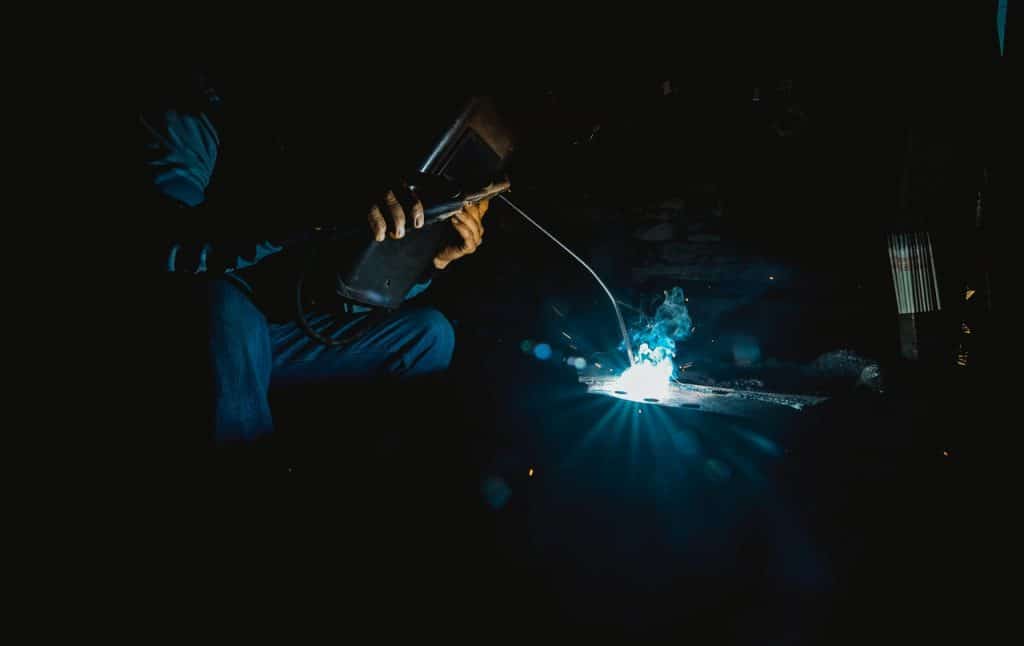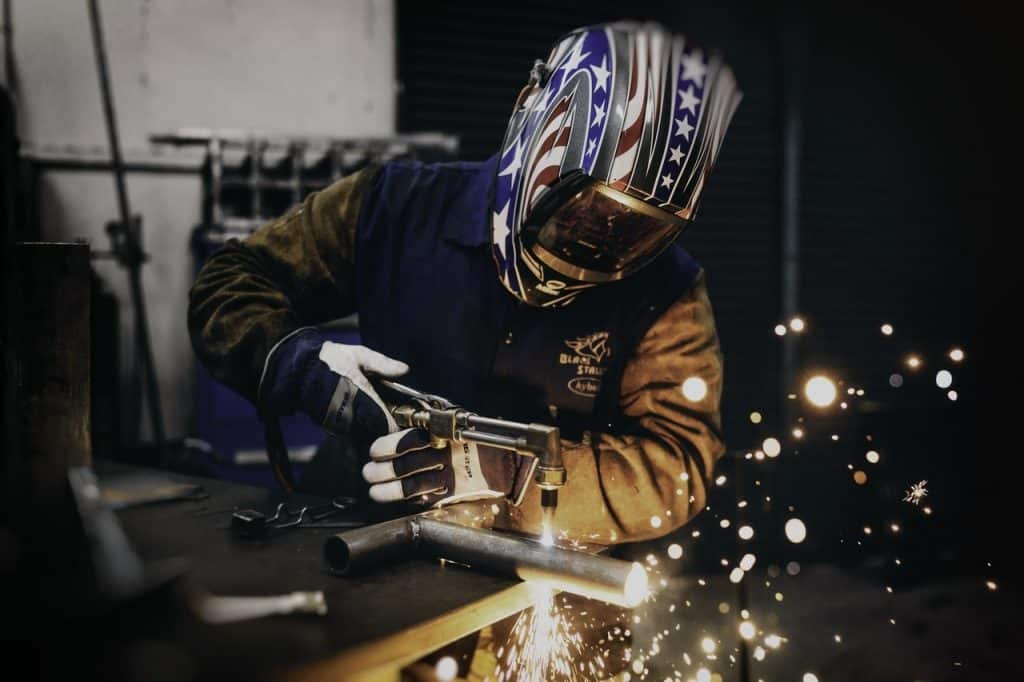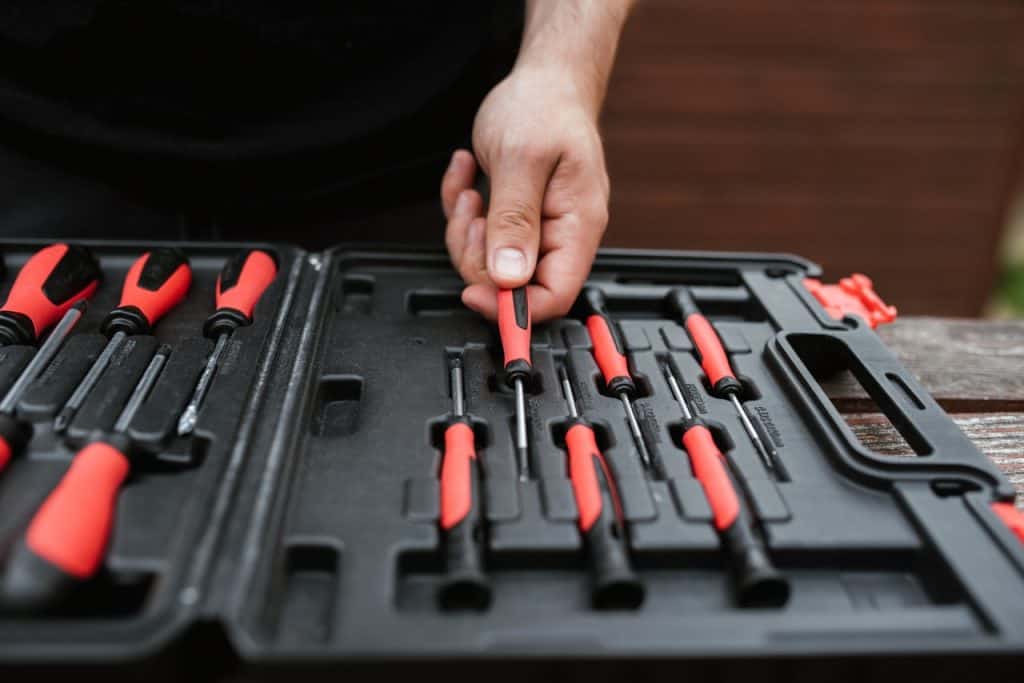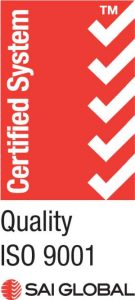Metal has been a staple in human industry for centuries. Science and technology have had a tremendous impact on the development and refinement of methods for working with metal.
Let's take a moment to define "weld" so that we can move on to more complex methods of metal joining.
In the manufacturing process, a weld joint is created by fusing two pieces of metal or thermoplastic together.
The base material is not melted during the fusing process, making it distinct from other metal-joining methods like soldering.
When two metal pieces are welded together, they become one solid piece. All welders operate on the same principle of using a gas torch or an electric welder to generate concentrated heat in order to melt metal. After the initial fusion, the operator will use a filler substance to complete the process.
Table of Contents
Who This Article Is For
The course is ideal for novice welders. Beginner welders can advance their metalworking abilities by participating in this training.
We took a welder's course together in college while I was finishing up my thesis and taking an advanced sculpting class on an as-needed basis.
It is common practise for us to perform delicate wire work using the oxy-acetylene welding method. Although Oxy welding is less flexible than MIG and takes longer to set up, it is still my prefered method.
When I was helping a neighbour fix bicycles in Reno, he handed me the gun to his flux-cored 110-volt welder and said, "OK, now you do it." This was our introduction to MIG welding.
Someone who has used a MIG welder before compared it to a super hot glue gun. Our fear of doing a bad job vanished within 20 minutes of hearing that sentence.
Working as a structural welder, our projects ranged from large-scale Instructables builds to exhibitions that travelled the world.
We are not trained professionals, but our knowledge of metalworking and welding is extensive and self-taught.
Personal Safety Equipment
With the right precautions, MIG welding can be done without risk.
Welding metal presents a number of hazards; we must take precautions to avoid injury.
We use an auto-darkening welding helmet to protect our eyes from the light produced by arc welding when the torch is not in use.
Auto-darkening features on welding helmets can be helpful if you do a lot of welding and don't want to take your helmet off to check on your progress.
If you work in a shared shop with lots of people, welding screens are a great way to keep them from spying on you.
A screen prevents any onlookers from being blinded by the arc's intense glow.
Skin protection is a must.
When grinding and welding, sparks and metal slag can fly in every direction. Although leather and other natural fibres won't melt if exposed to high temperatures, synthetic fabrics will melt into the skin and cause severe burns if they catch fire.
However, a leather jacket is an absolute necessity if you intend to do any significant amount of welding. Welder's aprons and long-sleeve flame-resistant cotton shirts are great options for those of us who heat up quickly while working.
We wear coveralls designed for welding most of the time.
When welding, I can tuck the sleeves into my gloves, and when grinding, I can simply roll them up. They're completely covering me up.
This shield protects you not only from the intense heat produced by the welding arc, but also from the harmful ultraviolet rays it emits.
It's recommended that you wear sturdy work shoes that aren't made of synthetic materials, just like your welding gear.
No shoes with wheels or soles are allowed, including sturdy work boots and canvas slip-ons.
If I plan on welding for longer than 15 minutes, I don't need to worry about putting on sunscreen.
My neck sometimes gets sunburnt due to the tiny gap between my leathers and helmet, but SPF 110 seems to have solved this problem.
Welding involves working with extremely hot metal, which can burn your hands and arms.
As a result, we must wear MIG welding gloves. For some, MIG gloves can be quite uncomfortable.
You should be able to fling them from your arm to the ground if they get too warm.
A grinding visor is a protective face shield designed to be worn while using a grinder.
When grinding off paint or other metal finishes, always wear a face mask to protect yourself from inhaling the steel's fumes.
Since welding can be dangerous, we always wear protective eyewear under our helmets.
Even if you've heard terrifying stories about people's eyes being pierced by metal slag and shards, YOU SHOULD STILL WEAR SAFETY GLASSES.
The Z87.1 rating for these safety glasses is the highest possible. Wearing eye protection while welding will help shield your eyes from the UV glare of other welders and sparks.
Ear protection, such as muffs or plugs, should be used whenever welding or grinding is being done.
If you're exposed to the noise of grinding wheels striking steel at high speeds for too long, you might develop temporary hearing loss or discomfort.
Toxic fumes can be avoided by welding in a well-ventilated area. It is dangerous to breathe in the fumes created by MIG welding.
If you plan on welding for longer than 30 minutes without a break, you should wear a mask or a respirator to protect your lungs from harmful metal fumes.
Even More Welding Safety

Galvanized steel cannot be welded. In order to prolong the life of the galvanisation process and protect the steel from corrosion for as long as possible, zinc is added to industrial steel before it is galvanised. (Consider lampposts and bridge piers.)
Zinc coatings produce a highly toxic and carcinogenic gas when burned.
Inhaling the immolated coating can cause welding shudders or heavy metal poisoning.
Although flu-like symptoms may only last for a few days, they may have lasting consequences.
This is not some sort of practical joke. Do not weld galvanised steel; we witnessed someone who did so ignorantly end up in the hospital.
Weld slag can spread over a wide area. Sparks from a grinder could potentially travel even further than they do now. Clear the welding area of combustible materials like sawdust, paper, and plastic bags.
When welding, it's easy to lose track of your surroundings and miss potential dangers if you're focused on the pieces you're working on.
Reduce the risk of an accident by clearing your welding area of anything that could catch fire.
As a preventative measure, always have a fire extinguisher close to the door leading out of your office.
When welding, it is recommended to have CO2 extinguishers on hand.
In a welding shop, water extinguishers are a bad idea since you're near to a machine that converts wall electricity into lightning.
Different Kinds of Welding
The most popular welding techniques among manufacturers and do-it-yourselfers are metal inert gas (MIG) welding, tungsten inert gas (TIG) welding, arc welding, and gas welding.
MIG welding may be the most common technique for joining metals, but it is far from the only one.
General purpose metal arc welding (GMAW), also known as metal inert gas welding (MIG welding), is the most common and simplest method of joining metals used in industry and the home.
The GMAW method can be used to fuse various metals, including mild steel, stainless steel, and aluminium.
Although the full name of MIG welding was changed to Gas Metal Arc Welding (GMAW) a few years ago, the nickname MIG welding has undoubtedly stuck around.
In the MIG welding process, a consumable wire electrode and a shielding gas are used to create a semi-automatic arc (Metal Inert Gas welding, or MIG for short).
Massive electrical current generated by the machine causes the wire and base metal to fuse and melt.
MIG welding was developed during World War II because production welders needed a faster method to weld metals together.
While MIG welding's fundamental principles haven't changed much in the last 70 years, newer models have improved features like higher-quality components and even onboard computers.
By creating a short circuit between a positive anode and a negative cathode, MIG welding is able to join metal together (the base metal being welded).
By using a short circuit and an inert gas to melt the metals, welding is made possible.
When the heat is removed, the metal solidifies into a new piece that can be used for fusing.
Many different metals, such as carbon steel, stainless steel, aluminium, and magnesium alloys, can be welded using MIG welding.
This lesson will not go into detail about welding anything besides mild steel; for that, you should consult your welder's handbook.
Oxy-acetylene torch welding is an excellent method for joining small decorative parts together. However, it is not used as frequently for standard mild steel welding.
These joints were made during the dawn of the industrial age. Acetylene and oxygen combined produce a flame hot enough to melt steel.
The gas torch can be used for more than just brazing copper and bronze; it can also be used to weld aluminium, including the thin tubing used in refrigeration systems.
GTAW, also known as Tungsten Inert Gas (TIG) welding, is a process that, like oxyacetylene gas welding, calls for the operator to have excellent hand-eye-foot coordination.
Therefore, TIG welds are ideal for our work that requires a high degree of finesse, such as sculptures and architectural details.
TIG welds, in addition to being stronger, also have a superior finish that can't be damaged by sanding or grinding.
TIG welding is one of the cleanest welding processes available. Using a torch electrode, you can join your foundational material to the earth. After that, the welder's current is started by pressing a foot pedal, and its strength is fine-tuned by turning a knob.
Filler material is fed continuously from a rod into the weld pool in place of a disposable wire feed. As a result of controlling the flow of material, slag spatter is reduced.
Stick welding and arc welding are frequently used interchangeably to clear up any ambiguity.
Metal can be welded with an arc welder if an electrode is fastened to a coated stick.
An electrical arc starts at the point where the disposable electrode tip makes contact with the foundation material.
The distance between the electrode tip and the base material governs the amount of heat produced by the very hot electrical arc.
Therefore, arc welding is well suited for structural production, construction, and extensive maintenance.
Though arc welds are extremely hot and may quickly burn thin material, MIG welding is preferable for thinner materials.
Must-Have Welding Tools For Beginners
If you're just starting out in the welding industry, you'll want to know what tools and supplies you'll require. In this post, I'll discuss that and related topics.
It's easy for new welders to get stuck on the idea that they need a lot of expensive equipment and a lot of cash to get started.
Common misunderstandings about welding need to be addressed.
Auto-Darkening Welding Helmet

Anyone who intends to do any welding will require at least a basic welding instrument. What you're looking at are welding goggles. Not all welding helmets are created equal, but a good one won't set you back $350.00.
Because it is so important to your work, your welding helmet should be intuitive to put on and take off.
You could prevent this problem by investing in a welding helmet with an integrated shade. Therefore, using the lens while welding could lead to improper placement of the weld.
An auto-darkening welding helmet allows the user to see the workpiece clearly before beginning welding, resulting in greater precision and less frustration.
Welding Magnets
Because of all the ways they can be put to use, welding magnets are an integral component of the welding manufacturing system. In a flash, you can secure components and create right angles in any of your projects. We love to use them when I am welding frames for tables, fire pit grates, and other items.
They come in different sizes to suit jobs both big and small. You should stock up on lots of magnets to prevent this from happening. If you're constructing a square frame, for instance, you'll need to place a magnet on each of the four corners of the work piece.
Welding Framing Jig
We included it here because it is an effective way to guarantee that your welds produce square frames, even though it isn't strictly necessary for beginners.
Tighten the framing jig around the two end pieces of your work, and then weld the tacks.
Now that you've created a 90-degree angle, you're finished. Is that not the case? You can save money by using C clamps to make one of these.
When you consider that steel tends to distort when welds are made, having a welding framing jig can save you a lot of time and hassle.
Speed Square
Why the speed square is so important: Let's say you have a long section of square tubing and you need to remove about 12 inches of it.
Set your speed square to the workpiece and mark the tube with a line to create a 90-degree cut across the tube.
If you want to cut across the steel tube, you can easily make a 45-degree angle with your speed square. A straightforward welding tool like this is indispensable. I have used mine for a wide range of welding applications.
Sheet Metal Gauge
Here's a tool to use if you're wondering about the metal's thickness. The chart tells you what settings to use for different metal thicknesses, which is included with most welders and is a huge help.
Sheet metal gauges are necessary because it's hard to tell how thick metal is just by touching it.
The gauge's readings are obtained by positioning the apertures over the object to be measured.
This is a helpful instrument to have on hand whenever a large quantity of metal is present and its thickness is unknown.
Welding novices should look elsewhere for their first piece of welding gear.
Metal File
Metal files are something you have probably used before, if not for welding, then perhaps to tidy up your fingernails. They work wonderfully when you're on the home stretch of a big project. You'll want to get rid of the metal burrs that remain after cutting your projects.
A grinder is useful for polishing larger metal pieces, while files are better for detailed, intricate work. Therefore, they are a wise expenditure and a good deal.
Welding Clamps
This next piece of gear is also crucial for effective welding. Ten welding clamps are the bare minimum you'll need. They will prove useful in many situations. Picture yourself starting a welding job by first tack-welding the parts together.
If you don't use clamps to keep your parts close together during the welding process, they'll get thrown out of square and ruin your project. Ten clamps have been used in a single task on more than one occasion.
Welding Gloves
It's best to wear welding gloves unless your fingers have already been damaged.
If that's the case, you can disregard them. Using the thick welding gloves, you can safely pick up hot metal.
The alternative is the thin leather gloves. In TIG welding, this is helpful because precise control of the torch is often necessary.
If you need to pick up a lot of hot metal, you can do so without fear of damaging them. Keep in mind that the temperature of the welding arc is around 10,000 degrees, so you will feel the heat as you work.
Metal Brush
There is no way around the use of a metal brush after engaging in any welding process that generates slag.
Stick welding and flux core welding both produce welds that are covered in a thick layer of slag that must be scraped away before the weld can be inspected.
Tools such as metal brushes and chipping hammers are ideal for this task. A slag coating is formed during welding that acts as a barrier.
Protecting the weld puddle from the elements is critical. Shielding gas ensures spotless welds every time.
Hammer
Benchworkers typically make use of ballpen, straight peen, and cross peen hammers.
In addition to the afore-mentioned three tools, soft-faced hammers are frequently used in metalworking.
The use of these tools makes it possible to assemble or disassemble a part without damaging the finished surface. The heads of soft hammers are typically made of softer materials, such as lead, plastic, rawhide, wood, or copper. Due to their attachment to a steel handle, they can be easily replaced when they become worn.
Screwdriver

Instruments for driving and removing screws. Standard flat-blade screwdrivers and Philips screwdrivers with a crossing tip for use with Philips-head screws are the two most common types of screwdrivers sold at hardware stores.
Both types come in regular, short, and angled variations.
It's important to remember to use the right sized screwdriver for the right screw.
If the screw is too big, it damages the slot in the screw and could even break it. Meanwhile, a Phillips screw slot can be damaged by a screwdriver that is too small.
Wrench
An assortment of wrenches are available for a wide range of jobs. The function, shape, or design of a particular wrench usually informs its name.
Open-end wrench
It's possible to use either a single or double end. To turn nuts and bolts in a tight space, try inverting the wrench at the end of each stroke.
A double-ended wrench is useful because it can be used on two distinct kinds of nuts and bolts.
Box wrench
It's also known as a box-end 12-point wrench. This wrench has 12 notches that go all the way around the nut and are evenly spaced. Some nuts can have their angles adjusted by a few degrees simply by moving the wrench to a different notch. Its smallest possible angle of rotation is 30 degrees, or one-twelfth of a full circle.
Socket wrench
Similar to the drive mechanism of a box wrench, a square-headed handle can be attached to the top end of a socket wrench to serve as an alternative drive mechanism.
Depending on the type of bolt or nut being tightened, the tool's handles could be rachets or torque handles.
Adjustable wrench
This features a movable hole to accommodate different sized bolt and nut heads.
It is convenient for mobile mechanics to not have to bring their entire toolkit whenever they need to make repairs. Due to the increased likelihood of slippage if the bolt head is not properly adjusted, these are not ideal for use in a workshop.
Allen wrenches
These rods are hexagonal and shaped like an L, making them suitable for use with Allen set screws.
Pliers
They have been designed to hold and grip very small parts during specific machining procedures. The user's gripping force can be "multiplied" by using these tools, which are essentially modified levers.
Conclusion
For centuries, metal has been essential to human industry, and the advancement of science and technology has had a profound effect on the evolution and improvement of techniques for working with metal. For those looking to improve their metalworking skills, this article is a great resource. While completing our theses and an advanced sculpture course, we took a welder's course together in college. Neither of us has formal training in metalworking or welding, but we have acquired a wide range of experience and expertise through experience and self-education. To shield our eyes from the bright light created by arc welding when the torch is off, we wear auto-darkening welding helmets.
Taking the necessary safety measures makes MIG welding completely risk-free. When welding, it's important to protect onlookers' eyes from the bright light of the arc, and welding screens do just that. Sparks and molten metal slag can fly in any direction, so it's important to wear protective clothing. People who tend to get hot while working can benefit from wearing welder's aprons or long-sleeve flame-resistant cotton shirts. We have to use special equipment like MIG welding gloves and grinding visors to keep us safe.
Always use a face mask when grinding off paint or other metal finishes to prevent inhalation of the toxic fumes released by the steel. Under our helmets, we should also wear safety glasses; these have been certified to the highest standard, Z87.1. Wearing earplugs and working in a well-ventilated area can help reduce exposure to harmful fumes when welding or grinding. Galvanized steel is ineligible for welding due to the dangers posed by zinc coatings, which can result in welding shudders or heavy metal poisoning. Keep a fire extinguisher close to the exit door of your office, a canister of carbon dioxide on hand, and a water extinguisher close to the machine that transforms standard electrical current into lightning to lessen the possibility of an accident.
MIG welding, TIG welding, arc welding, and gas welding are all examples of different types of welding. Forging mild steel, stainless steel, and aluminium together, MIG welding is a semi-automatic arc welding process. The idea for this quicker method of welding metals together emerged during World War II. Although oxy-acetylene torch welding is a common technique for joining small decorative components, it is not as commonly used for regular mild steel welding. Welding with Tungsten Inert Gas (TIG) is a highly precise process that calls for good hand-eye coordination and footwork.
TIG welding, which employs a torch electrode to join materials to the ground, is one of the most environmentally friendly welding methods. To avoid any confusion, the terms "stick welding" and "arc welding" are used interchangeably. Welding goggles, welding helmets, welding magnets, and MIG welding are essential for beginners. The purchase of a welding helmet with a built-in shade is a great way to dispel a common myth about the process.
The welding framing jig, sheet metal gauges, speed squares, metal files, and C clamps are highlighted in this section.
Welding square frames is easier with the help of a framing jig, and you can find the metal's thickness with the gauges. The metal files are great for removing burrs after cutting projects, and the C clamps are a cost-effective alternative to other clamping options. The text focuses primarily on the equipment necessary for proper welding. Welding clamps, gloves, brushes, hammers, drivers, and drivers are all part of this set of tools.
Welding gloves are required for safely handling hot metal, and clamps are used to hold components together. The weld puddle can be shielded from the elements with the help of metal brushes and chipping hammers. To drive or remove screws, a screwdriver is required. The most critical information is that a Phillips screw slot can be damaged by a screwdriver that is too small and that it is important to use the right sized screwdriver for the right screw. There are numerous types of wrenches, including open-end, double-ended, box-end, socket, adjustable, and Allen wrenches, to suit a wide variety of tasks.
Narrow spaces can be navigated with the help of an open-end wrench, while a double-ended wrench can be used on two different types of fasteners at once. There are 12 notches on a box wrench, one for each side of the nut, so that the nut can be tightened or loosened by simply switching the wrench's position. In order to provide an additional means of driving, socket wrenches feature a square-headed handle at the very end of the tool. The hexagonal shape and L-shape of an Allen wrench make it ideal for tightening and loosening Allen set screws. Very small components require the use of specialised pliers for gripping and holding during machining processes.
Content Summary
- This was our introduction to MIG welding.
- We are not trained professionals, but our knowledge of metalworking and welding is extensive and self-taught.
- With the right precautions, MIG welding can be done without risk.
- However, a leather jacket is an absolute necessity if you intend to do any significant amount of welding.
- As a result, we must wear MIG welding gloves.
- A grinding visor is a protective face shield designed to be worn while using a grinder.
- Toxic fumes can be avoided by welding in a well-ventilated area.
- Clear the welding area of combustible materials like sawdust, paper, and plastic bags.
- Reduce the risk of an accident by clearing your welding area of anything that could catch fire.
- The GMAW method can be used to fuse various metals, including mild steel, stainless steel, and aluminium.
- TIG welding is one of the cleanest welding processes available.
- If you're just starting out in the welding industry, you'll want to know what tools and supplies you'll require.
- You could prevent this problem by investing in a welding helmet with an integrated shade.
- If you're constructing a square frame, for instance, you'll need to place a magnet on each of the four corners of the work piece.
- Tighten the framing jig around the two end pieces of your work, and then weld the tacks.
- When you consider that steel tends to distort when welds are made, having a welding framing jig can save you a lot of time and hassle.
- Set your speed square to the workpiece and mark the tube with a line to create a 90-degree cut across the tube.
- If you want to cut across the steel tube, you can easily make a 45-degree angle with your speed square.
- Ten welding clamps are the bare minimum you'll need.
- Using the thick welding gloves, you can safely pick up hot metal.
- Tools such as metal brushes and chipping hammers are ideal for this task.
FAQs About Home Design
There are four main types of welding. MIG – Gas Metal Arc Welding (GMAW), TIG – Gas Tungsten Arc Welding (GTAW), Stick – Shielded Metal Arc Welding (SMAW) and Flux-cored – Flux-cored Arc Welding (FCAW). We dive deeper into each type of welding here.
The most common welder used in basic projects by homeowners and hobbyists is the stick welder. ... But the electrodes in a stick welder require frequent replacement compared with other forms of welding. These include the gas tungsten arc machines, TIG and gas metal arc welder, known as MIG welders.
The four main types of welding are: Gas Metal Arc Welding (GMAW/MIG), Gas Tungsten Arc Welding (GTAW/TIG), Shielded Metal Arc Welding (SMAW), and Flux Cored Arc Welding (FCAW). Earn your degree in Welding Engineering Technology from NEIT and begin your new career path today!
Materials needed for welding include consumables, such as MIG wire and flux-cored wire in various diameters and materials, welding tips, electrode sticks or tubes, flux, and TIG or gas brazing rods.
One of the most essential and basic welding tools are welding machines, which provide most of the power and equipment you need to weld. You will need different welding machines depending on what types of welding you plan to do: Flux-Cored and MIG welders. TIG Welders.

